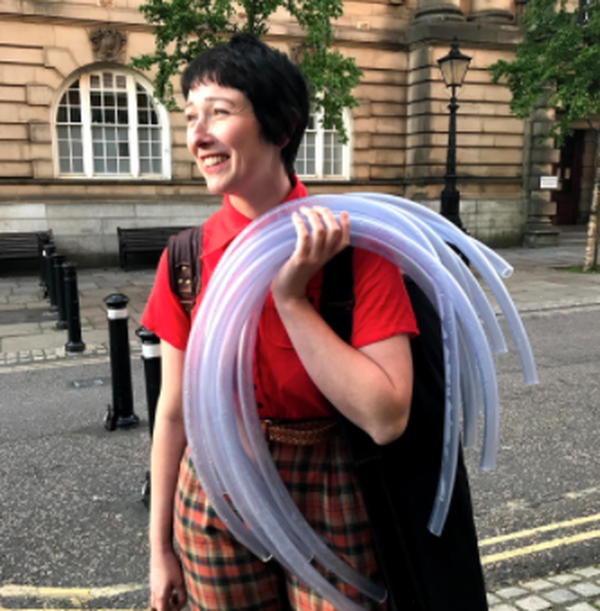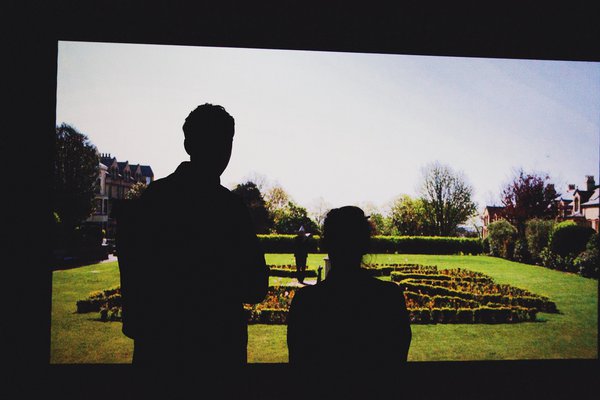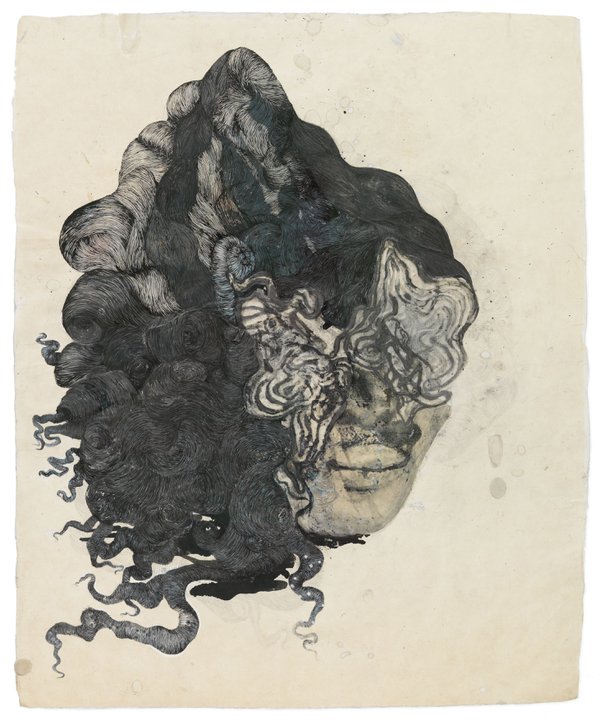Q&A with Heather Ross
Heather Ross, the artist behind the 'The Loud and Soft Speakers' discusses with us her career, her work and her interest in Kurt Schwitters.

Tell us a bit about your background as an artist?
I am originally from Hamilton, Scotland and I am currently based in Preston, Lancashire. I studied at Grays School of Art (2000-05), Chelsea College of Art (2012-13) and I'm currently undertaking a practice-based PhD with Newcastle University on the subject of Kurt Schwitters in Britain.
My work has been shown nationally and internationally and recent projects include: The Loud and the Soft Speakers, Hatton Gallery (2018); Merzwomen and the Daughters of Dada, Vallum Gallery, University of Carlisle (2018); The Caravan Press: Making Visible The Archive of Gwyneth Alban Davis, Internationally distributed publication and print archive (2017); All The Better To Hear You With, Merz Barn, Cumbria (2017); A Bird In The Head, Daniel Arnaud, London (2017). I have also recently published an article Towards a Gestural Archaeology of Schwitters' 'Pointless' Collage (or How Learned About Schwitters' Work Through Painting Leftovers), Intellect JAWS Journal (2018).
I also work part time as a lecturer at The University of Central Lancashire, Preston and I have previously taught at Grays School of Art, Aberdeen and Chelsea College of Art, London.

How does it feel having your work on show at Hatton Gallery?
I'm delighted to have my work installed in such a prestigious gallery. It's especially exciting to be able to show The Loud and the Soft Speakers in conjunction with Kurt Schwitters' Merz Barn Wall and his 'Pointless' Collage (otherwise known as Untitled (with porcelain shard) 1946) , which is rarely seen and has been loaned specially for the exhibition. It is housed in the Gathering exhibition in a grotto dedicated to Gwyneth Alban Davis, a printmaker and friend of Schwitters during his time working in the Lake District.
Within Gathering I have shown part my 2017 collaborative project The Caravan Press: Making Visible the Archive of Gwyneth Alban Davis and I will be curating this particular grotto over the next two months with material from Gwyneth Alban Davis' archive. I hope that the show and archival material might generate new readings of Schwitters' Merz Barn Wall, permanently situated in the Hatton Gallery.

What is your film The Loud and the Soft Speakers about?
My film makes visible a relatively unknown and undocumented work by Kurt Schwitters known as Leise/The Silence Poem and considers this work with respect to Schwitters' time in internment as an 'enemy alien' in the Isle of Man (1940-41).
The Loud and the Soft Speakers was performed and filmed in Hutchinson Square, Isle of Man, on the same site as the WW2 internment camp and responds to archival material collected from the Manx Museum Archive, Imperial War Museum Archive, Schwitters' artwork and place. The work also includes a German reading of Fur Dich, a poem written by Schwitters for his wife whilst in internment, read by performer Florian Kaplick.
The performance explores the themes of alienation, isolation, longing, boredom, authority and protest, through questioning and playing with language, materials and through the embodiment of specific gestures and characters. The work could also be considered with respect to the current political rhetoric concerning immigration, displacement and the silencing of particular marginalised voices in society.
Why are you so interested in Kurt Schwitters?
Like many contemporary artists I find his work to be a continual source of inspiration. His lifelong 'Merz' project combined different disciplines which included painting, sculpture, installation, collage and assemblage, poetry, prose, typography and performance and he is considered to be the founding father of installation, as a result of his 'Merzbauten'.
There is a lot of rich material to delve into with Schwitters and there is still further material to be explored. It is important to continually re-evaluate how his work is relevant today: his reconsideration of systems of categorisation and knowledge generation; his questioning of language and his approach to materials and environment. This is particularly important with respect to his Merz Barn Wall (situated in the Hatton Gallery), which is a fragment from his original Merz Barn and to ask: how can we experience this in the present? I believe that arts practice can open up this dialogue between the historical context and a contemporary audience.
Why did you want to be part of the previous season of exhibitions at Hatton Gallery, Exploding Collage?
The title 'Exploding Collage' relates to a description of Schwitters' expanded practice, and all of the exhibitions within this season explore one or more aspects of this idea. I was keen to contribute by highlighting a key work by Schwitters that combines word play with a manipulation of materials and like his 'Merzbauten' was performed across multiple sites including Germany, France and Britain.
What do you think is special about the avant-garde artists of the early 20th century?
This was a time of real energy, ambition and change; influenced by two world wars, artists were really questioning the nature of art, what it was and could be.
Is there another project that you are currently on or have lined up?
In the coming months I will be curating part of the Gathering exhibition. I'm also currently involved in researching the Hatton Gallery archive with specific focus on generating new work which aims to provide new readings of Schwitters' Merz Barn Wall.

Are you excited about Hatton Gallery’s new exhibition Francis Bacon | Ellen Gallagher ?
Yes I am. In particular, I have always been very interested in the work of Ellen Gallagher. I'm interested in how she uses the medium of paint as an editing tool for questioning and subverting cultural representations of racial identity.
The Loud and the Soft Speakers is running at Hatton Gallery until 11 May 2019. To find out more about our current and upcoming exhibitions including Francis Bacon | Ellen Gallagher, click here.



